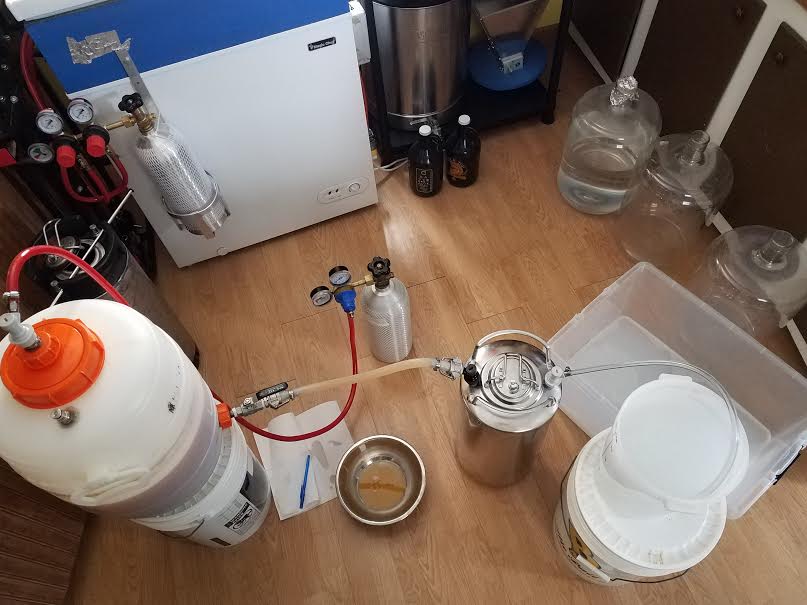You can't do a daisy chain that doesn't require reconfiguring the in and outs after each keg is filled with StarSan.Why wouldn't you fill through the liquid post? that's what I do and you get virtually zero foaming.
So you would go: Keg full to the brim with star san - Liquid post to liquid post - until star san blows out the gas post of the second keg - that gas post out would be connected to the liquid post of the third keg, which begins to fill until star san blows out the gas post of that keg
You could also just place a chalk/shim under you keg so that the gas post is the high point in the keg. This would mean that the star san wouldn't flow to the next keg until all air is purged from the keg. This would also depend on the fact that your gas posts are cut short enough to allow the headspace to fill the slight dimple where the the post port is (if that makes any sense from someone 5 beers deep)..
If you connect the gas post of the second keg to the liquid post of the third keg, then SS stops flowing to the third keg as soon as the SS level drops below the gas post in the second keg. You gotta reconfigure the ins/outs along the way. There is no way to do a hands-off daisy chain that fills each keg in turn.
Brew on










![Craft A Brew - Safale BE-256 Yeast - Fermentis - Belgian Ale Dry Yeast - For Belgian & Strong Ales - Ingredients for Home Brewing - Beer Making Supplies - [3 Pack]](https://m.media-amazon.com/images/I/51bcKEwQmWL._SL500_.jpg)

























































